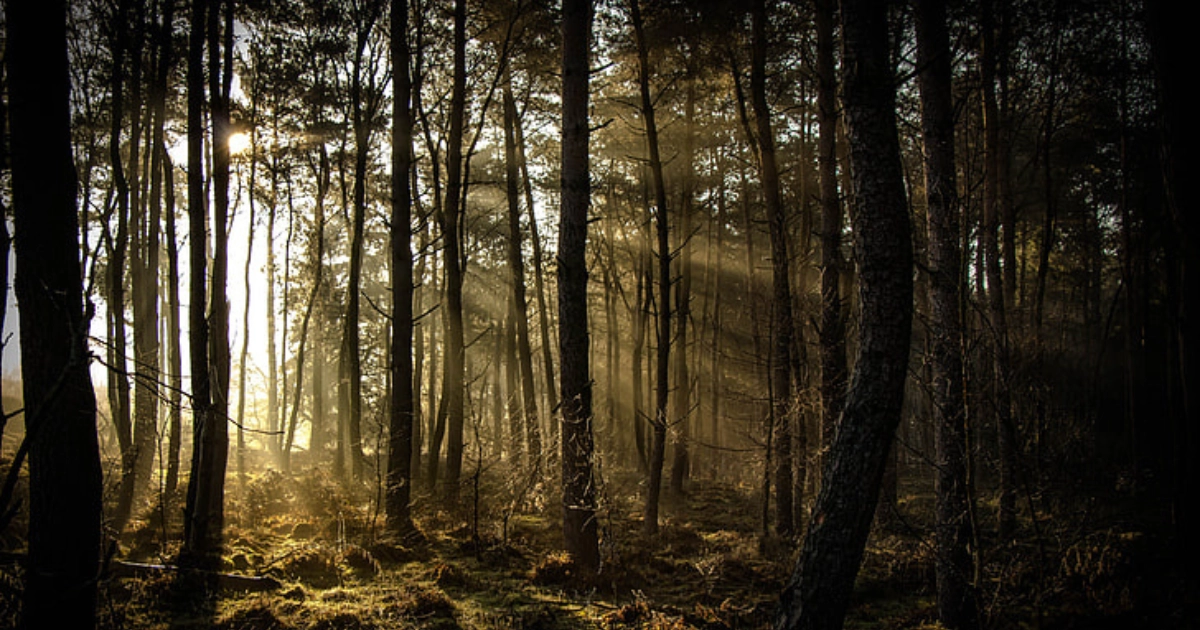
share this article
प्रथमं शैलपुत्रीति द्वितीयं ब्रह्मचारिणी ।
देव्याः कवचम्
तृतीयं चन्द्रघण्टेति कूष्माण्डेति चतुर्थकम् ॥
पञ्चमं स्कन्दमातेति षष्ठं कात्यायनी तथा ।
सप्तमं कालरात्रिश्च महागौरीति चाष्टमम् ॥
नवमं सिद्धिदात्री च नवदुर्गाः प्रकीर्तिताः ।
उक्तान्येतानि नामानि ब्रह्मणैव महात्मना ॥
prathamaṃ śailaputrīti dvitīyaṃ brahmacāriṇī |
Devyāḥ Kavacam
tṛtīyaṃ candraghaṇṭeti kūṣmāṇḍeti caturthakam ||
pañcamaṃ skandamāteti ṣaṣṭhaṃ kātyāyanī tathā |
saptamaṃ kālarātriśca mahāgaurīti cāṣṭamam ||
navamaṃ siddhidātrī ca navadurgāḥ prakīrtitāḥ |
uktānyetāni nāmāni brahmaṇaiva mahātmanā ||
First is Śailaputrī, second is Brahmacāriṇī,
third is Candraghaṇṭā, Kūṣmāṇḍā is fourth;
fifth is Skandamatā, sixth is Kātyāyanī,
and seventh is Kālaratri, and Mahāgaurī is eighth;
and ninth is Siddhidātrī, these are well-known as the Navadurgās,
these names were indeed uttered by the great Lord Brahma himself.
This is the second article in the Navadurgā series, describing the second of the Navadurgā Devīs who is worshiped on the dvitīya tithī, Devī Brahmacāriṇī. Part 1 on Śailaputrī Devī can be accessed here.
Dvitīyaṃ Brahmacāriṇī
दधाना करपद्माभ्याम्
श्री नवदुर्गा स्तोत्रम्
अक्षमाला कमण्डलू।
देवी प्रसीदतु मयि
ब्रह्मचारिण्यनुत्तमा॥२॥
dadhānā karapadmābhyām
Śrī Navadurgā Stotram
akṣamālā kamaṇḍalū |
devī prasīdatu mayi
Brahmacāriṇyanuttamā ||2||
Holding in her lotus like hands,
an akṣamālā and a kamaṇḍalū,
O Devī, shower your bliss on me,
Goddess Brahmacharini, the incomparable and highest one.
Devī Brahmacāriṇī - literally, She who revels in Brahman, is a tapasvī and performer of penance. It is said that the Vedas, tattva and tapaḥ are synonyms of the śabda “brahman”. She thus embodies the pursuit of knowledge, wisdom, and righteousness.This form of Devī is tremendously effulgent and extremely majestic, and she is filled with bliss and happiness. In this avatāra also, she is dvibhuja, with two arms, holding an akṣamālā in her right hand and kamaṇḍalū in the left. Devī Brahmacāriṇī wears a white saree, and she has a notably fair complexion. She is adorned with flowers, and is always represented barefooted.
Goddess Durgā in her previous birth was known as Satī, the daughter of Dakṣa Prajāpati. She was next born into the house of Parvata Rāja Himavān, and known as Śailaputrī - the first Navadurgā form. Then, guided by the instructions of Devarṣi Nārada, she practiced extremely difficult penances in the forest in order to obtain Lord Śiva as her divine consort. Due to her unearthly penances there for thousands of years, she gained the name and form of Brahmacāriṇī.
अदृश्या दृश्यरहिता विज्ञात्री वेद्यवर्जिता ।
ललिता सहस्रनाम स्तोत्रम्
योगिनी योगदा योग्या योगानन्दा युगन्धरा ॥ १२९ ॥
adṛśyā dṛśyarahitā vijñātrī vedyavarjitā |
Lalitā Sahasranāma Stotram
yoginī yogadā yogyā yogānandā yugandharā || 129 ||
She spent one thousand years eating only on fruits and beet-roots. After this, she spent the next one hundred years on only leafy vegetables. For this extended period of time, she suffered the torments of nature experienced when living in the wild - like torrential rains, scorching sun, and biting cold, under the open sky. After such a difficult routine, she increased her tapas and lived only on dry bilva pattā, or leaves - only those which had fallen on the ground - for another three thousand years. She engrossed herself day and night in worshiping Lord Śiva. Finally, she gave up eating even these dry leaves. For several thousand years she went on without any food and water. Because she gave up eating dry bilva leaves, so gained the name Aparṇā as one of her epithets - parnā, indicating the leaf; and Aparṇā, meaning she who gave up those leaves also.
महेश्वरी महाकाली महाग्रासा महाशना ।
ललिता सहस्रनाम स्तोत्रम्
अपर्णा चण्डिका चण्डमुण्डासुर-निषूदिनी ॥ १४५ ॥
maheśvarī mahākālī mahāgrāsā mahāśanā |
Lalitā Sahasranāma Stotram
aparṇā caṇḍikā caṇḍa-muṇḍāsura-niṣūdinī || 14v ||
After the hardship of penance for several thousand years, her body became extremely emaciated, and she was reduced to skeleton only. Her penance, sharpened as it was, caused great disturbance in all the three worlds and shook the entire universe. The devatās, ṛṣis, siddhas, and munis all eulogized her tapas as virtuously unprecedented.
She continued to meditate on Lord Śiva alone, to attain him as her husband. Finally, he appeared in disguise before her - as a saint - to test her. In the saint’s disguise, he first tried to discourage her, telling her of Lord Śiva’s weaknesses and personality flaws. She refused to listen and insisted on her resolve. Finally, the saint taunted Lord Śiva mercilessly. Aparṇā, Devī Brahmacāriṇī, became extremely angry and almost cursed him. Yet, when she opened her mouth, only chanting of Śiva Pañcākṣara mantra poured out. The saint in disguise then changed into his actual form as Lord Śiva.
Devī Brahmacāriṇī was thus blessed and asked him to marry her. In this way, she attained Lord Śiva to be her husband. Lord Śiva actually became emotional when he married her; as tears were rolling down his eyes, she wiped them away with her hands.
Durgā as Brahmacāriṇī represents the svādhiṣṭhāna cakra, located just below the navel, which governs creativity and emotional well-being. Activating this sacral chakra enhances creativity, passion, and emotional balance plus stability. This cakra is her abode, and embodies the pursuit of knowledge, wisdom, and righteousness.
स्वाधिष्ठानाम्बुजगता चतुर्वक्त्र-मनोहरा ।
ललिता सहस्रनाम स्तोत्रम्
शूलाद्यायुध-सम्पन्ना पीतवर्णाऽतिगर्विता ॥ १०४ ॥
svādhiṣṭhānāmbujagatā caturvaktra-manoharā |
Lalitā Sahasranāma Stotram
śūlādyāyudha-sampannā pītavarṇā’tigarvitā || 104 ||
The facade of Mā Brahmacāriṇī symbolizes simplicity. Her celestial body is Mars, and her favorite flower is the chrysanthemum. In fact it is the chrysanthemum, hibiscus and lotus flowers that are commonly used to garland the Goddess even in pūjā today.
May we attain the wisdom, simplicity, emotional balance, and creativity this dvitīya through the upāsanā of Devī Brahmacāriṇī.
Next - Candraghaṇṭā | Navadurgā - Part 3
References
- Śrī Durgā Saptaśatī, Devī Māhātmyam, Mārkaṇḍeya Purāṇa
- Navadurgā Stotram
- Śrī Lalitā Sahasranāma Stotram, Brahmāṇḍa Purāṇa
- Durga Puja or Navaratri
- Navadurga Symbolism of Chakra Awakening
- Significance of Navadurga
- 9 Divine Forms of Goddess Durga